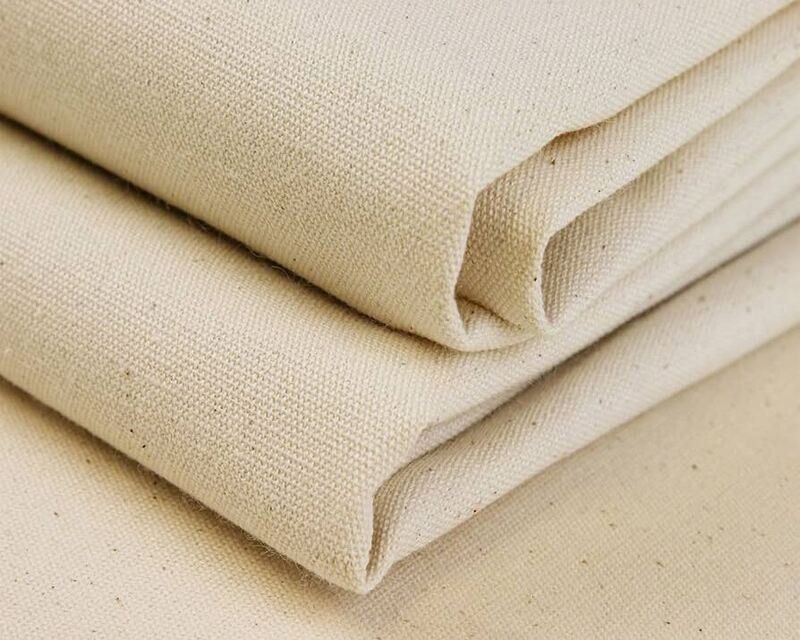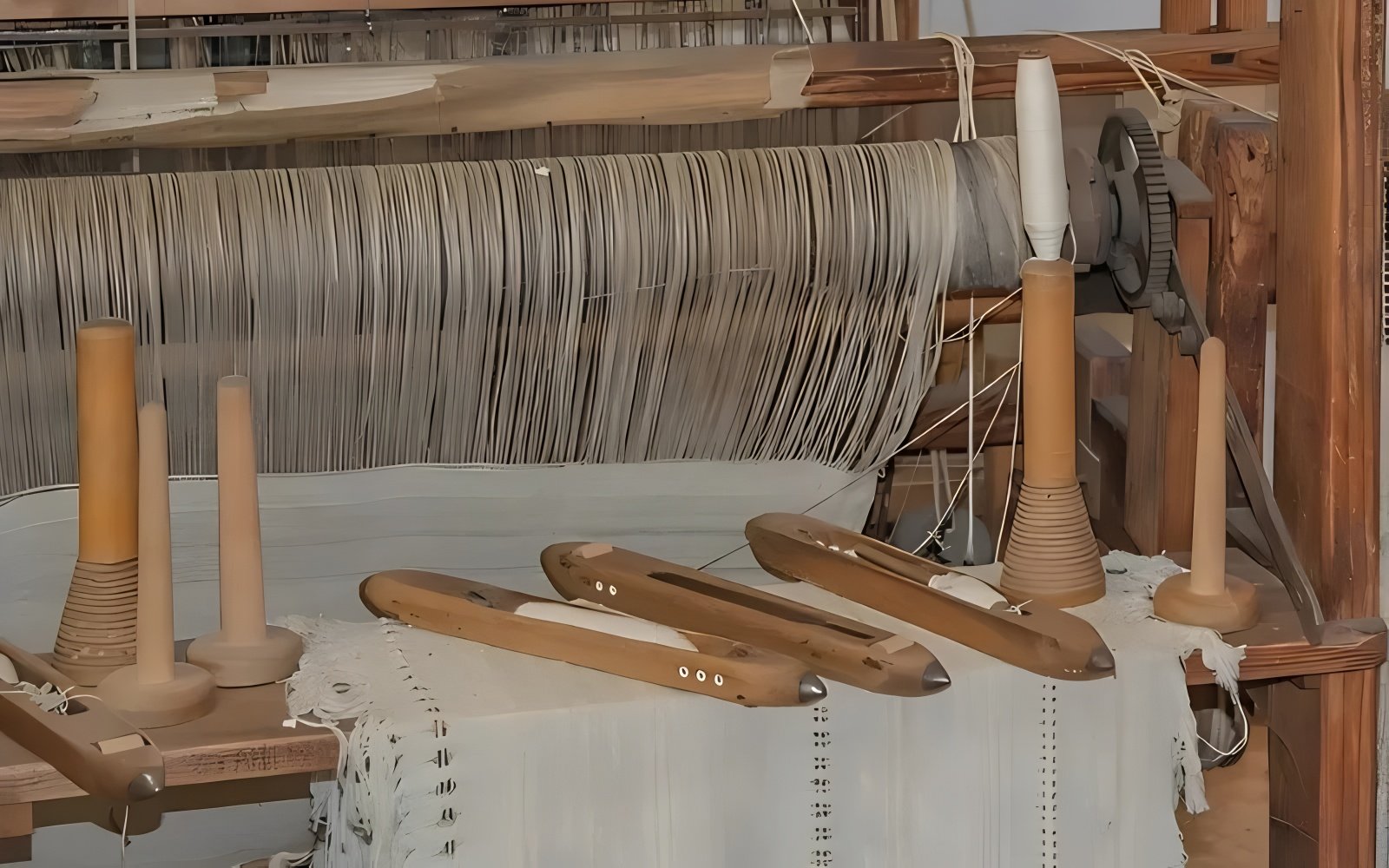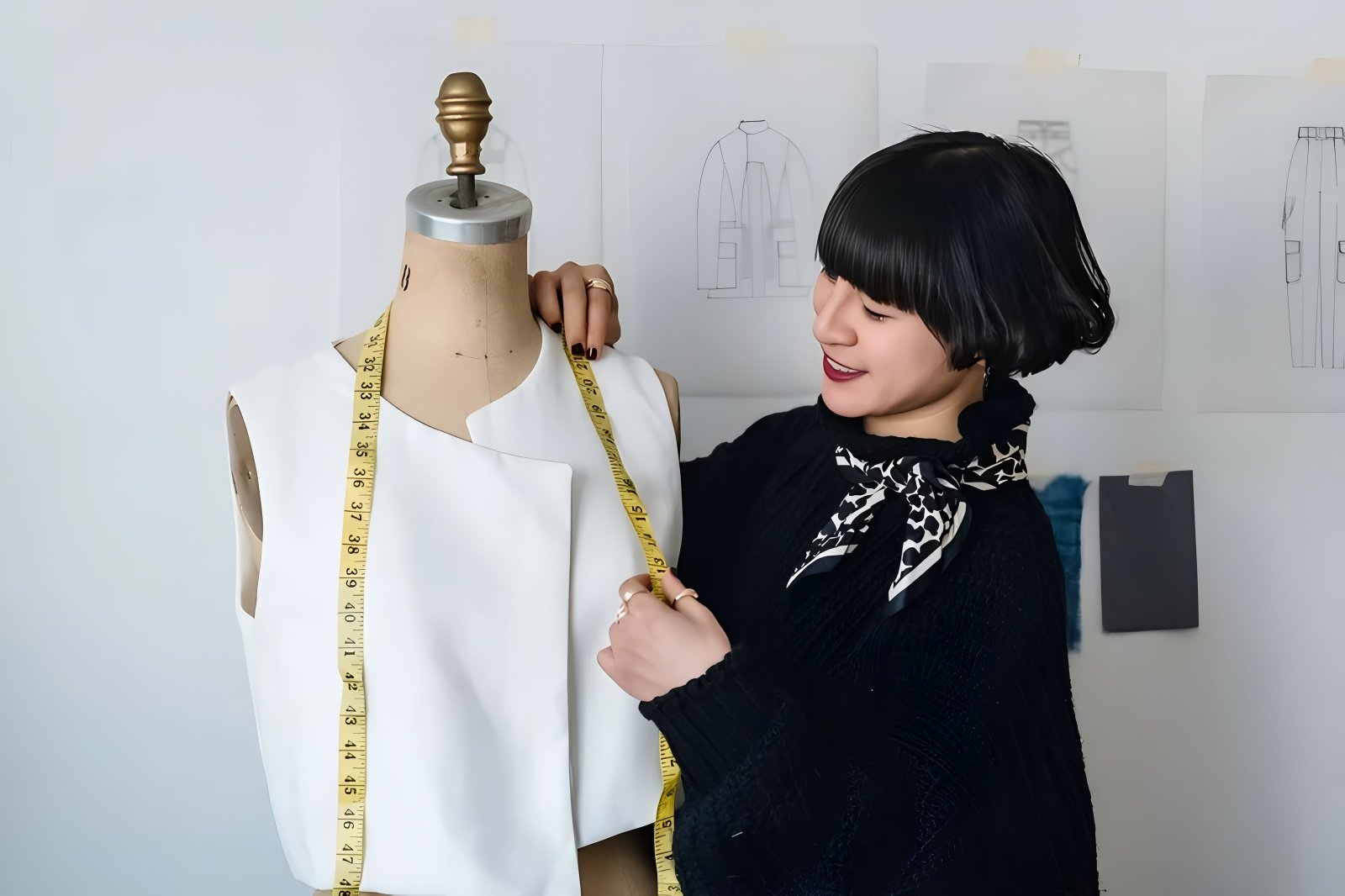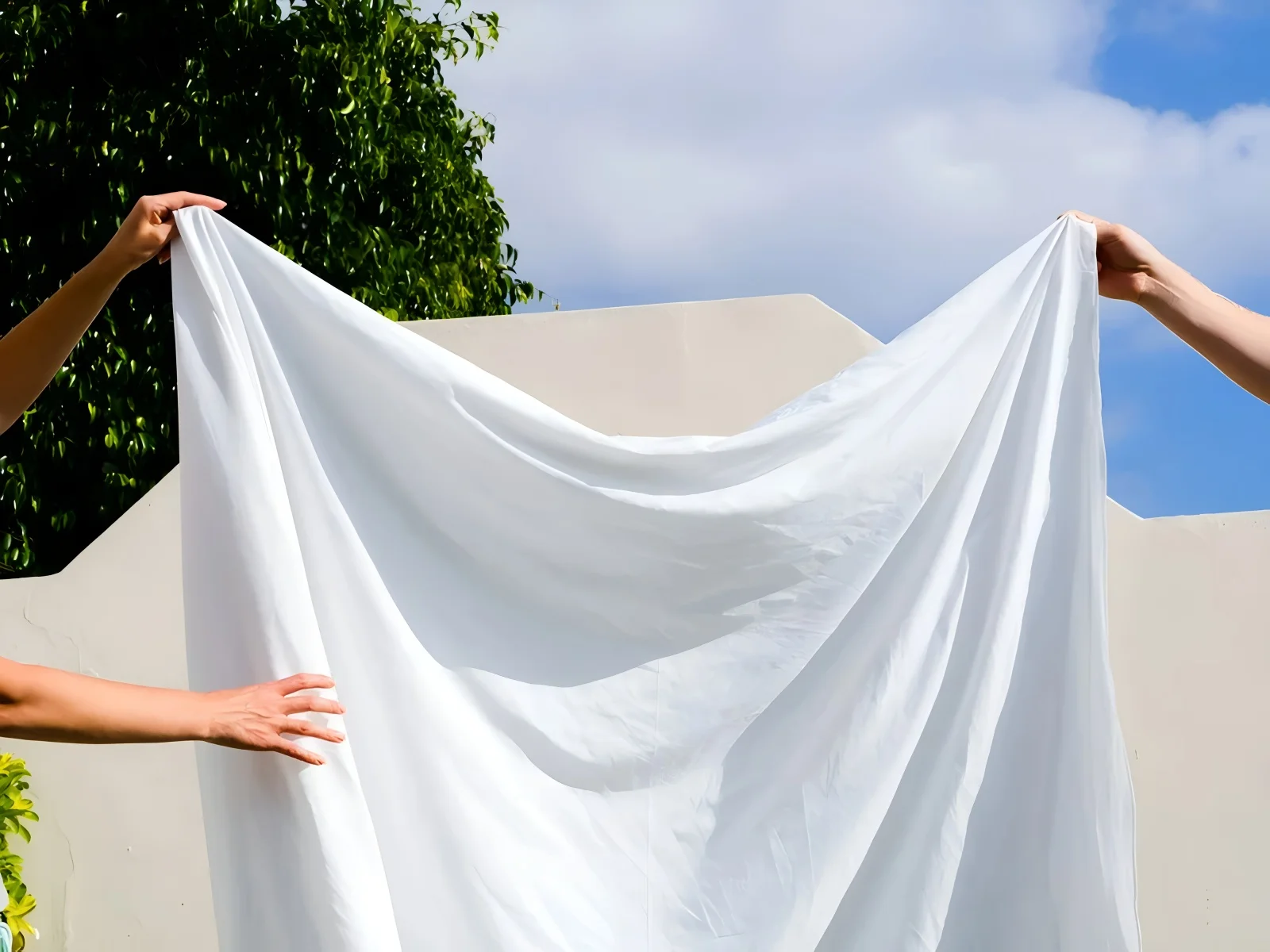What Is Calico: Natural Unbleached Cotton Uses And Eco Facts
If you’ve ever heard of calico fabric and wondered what it is, this guide is for you. Delve into the world of this unbleached cotton fabric, known for its affordability and natural aesthetic.
We’ll cover its essential characteristics, historical background, straightforward production, and why it’s a go-to for toiles, tote bags, DIY projects, and household items, along with care tips and eco-considerations.
1. What is this fabric called calico?
Ever heard of calico fabric? It’s a simple, natural-looking, and very useful material. Calico is a basic, plain cotton fabric, often found in its unbleached cotton fabric state, meaning it hasn’t been whitened or dyed. In this article, you’ll learn what calico looks and feels like, where it comes from, its many uses, and why so many people like it for different projects.

2. Understanding calico: the basics explained
2.1. What exactly is calico fabric?
Calico is a textile material made from cotton fibers. It’s known for its plain weave. “Plain weave” is the simplest way threads are woven together, crisscrossing over one thread and under the next, like a simple checkerboard pattern. A key feature of calico is that it’s typically unbleached and not fully processed. This means it usually doesn’t go through whitening or dyeing steps.
You might hear terms like “loomstate” (meaning the fabric as it comes directly off the loom or weaving machine) or “greige fabric” (referring to its raw, unfinished state, which often has a greyish-beige tint).
Calico is essentially a raw cotton material. Think of it as a basic canvas that can be used as it is or processed further to make other types of fabrics. Its material composition is primarily cotton, and its fabric weave type is plain weave. The typical finish for calico is unbleached, making it a wonderfully versatile cotton fabric.
2.2. Key characteristics of calico
Here are the main things to know about calico material:
- Appearance: Calico has a very natural look. Its color and finish are typically creamy or off-white because it is unbleached. You’ll often see tiny dark specks in the fabric; these are small bits of cotton seeds, a hallmark of its natural finish cotton and natural texture. This is normal and part of its charm.
- Texture: The feel of calico can vary. It often starts out slightly stiff or coarse. However, it becomes much softer after washing.
- Weight: Calico is usually a light to medium-weight fabric. There isn’t one single weight; it can differ.
- Durability: For its weight, calico is quite strong and durable.
- Printability: This fabric is an excellent surface for printing, painting, and dyeing. It takes inks and colors well, which is why its printability is considered good for techniques like screen printing or direct-to-garment printing. This is due to its even surface and absorbent nature.
- Absorbency: Being made from cotton, calico is very absorbent.
- Cost: One of the biggest advantages is its price. Calico is generally one of the most affordable cotton fabrics available.
- Shrinkage: It’s important to know that calico often shrinks when it’s washed for the first time. We’ll talk more about this later.
2.3. The look and feel: up close with calico
Calico has a simple, understated beauty. It’s not flashy; instead, it has a quiet, earthy charm that comes from its natural fiber composition. When you touch it, you might notice an initial stiffness or slight roughness.
However, this often gives way to a softer feel once the fabric is washed and used. This natural, somewhat rustic look is part of its appeal. It looks honest, unpretentious, and down-to-earth.
3. Where does calico come from?
3.1. A little bit of history: the story of calico
To learn about the origin and history of the term calico, we look to India. The name “calico” comes from the city of Calicut (now Kozhikode) in India. Centuries ago, Calicut was a very important center for textiles, especially famous for its cotton fabrics. European traders discovered this unbleached cotton cloth there and started bringing it back to Europe.
Calico fabric has historical roots in India and became very popular around the world, especially from the 1600s onwards, as part of the larger history of cotton and textile trade. Originally, calico from India was often hand-printed with colorful designs.
However, the plain, unprinted version also became very common and widely used. Calicut’s role as a major port for textile trading was key to calico’s spread.

3.2. How is calico made?
The journey of calico begins with the cotton plant. Here’s a simplified look at how this plain-weave cotton textile is made:
- Cotton bolls are picked from the plants. The raw cotton is then cleaned to remove seeds and other debris. After cleaning, it’s carded. Carding is a process that straightens out the cotton fibers, like combing them, to prepare them for spinning.
- These straightened fibers are then spun into yarn or thread.
- Finally, this yarn is woven on a loom. Calico uses a plain-weave, which is the most basic weaving pattern where threads interlace simply, one over and one under, to create the fabric.
The key thing that makes calico distinct is what happens after weaving. It typically undergoes very little processing. It’s usually not bleached or dyed, which is why it keeps its natural, off-white color and appearance. Its material composition is primarily cotton, and the fabric weave type is plain weave.
4. Why choose calico? The good things about this fabric
So, what is calico fabric good for? Here are some of the main reasons people choose calico:
- Versatility: Calico can be used for a huge range of things. This includes practice clothes, bags of all kinds, various crafts, and simple home items. Its versatility for both utilitarian items and creative projects makes it a go-to fabric. Calico is a versatile cotton fabric.
- Affordability: It’s generally much cheaper than many other fabrics. This makes it great for large projects, for experimenting, or when you’re on a budget. It’s often chosen for its affordability and natural, unfinished look.
- Natural & often eco-friendlier: Calico is made from cotton, which is a natural fiber. Because it’s usually unbleached and undyed, fewer chemicals are used in its production compared to heavily processed fabrics. This touches on the benefits of using natural vs. synthetic fabrics.
- Easy to work with: Calico is simple to sew, cut, and handle, making it a good choice for beginners learning to make things.
- “Blank canvas”: Its plain, natural color makes it a fantastic surface for creativity. Calico provides a natural base for printing, painting, embroidery, and other decorations.
5. What is calico used for?
5.1. In fashion and dressmaking: making “toiles”
One of the most common uses for calico in the fashion world is for making “toiles” (pronounced ‘twahl’). A toile is a practice version or a mock-up of a garment. Apparel makers use calico for creating toiles to test a sewing pattern, check the fit, see how the style looks, and how the fabric drapes before they cut into more expensive fashion fabric. This is a very common application: sewing test garments. Using calico fabric for apparel samples and mock-ups is standard practice.
Calico is ideal for toiles because:
- It’s cheap, so mistakes aren’t costly.
- It’s easy to draw on with pencils or pens to mark changes or adjustments.
- Its stable structure shows the shape and form of the garment well.

5.2. Tote bags, drawstring bags
Calico is incredibly popular for making all sorts of bags, especially calico tote bags and calico drawstring bag styles. You’ll see it used for reusable shopping bags, promotional bags given away at events, library bags, simple shoe bags, or dust bags for protecting other items.
Why is calico great for bags?
- It’s strong enough for everyday use.
- It’s easy to print on, making it perfect for using calico for custom printed bags.
- It’s very affordable, especially for bulk orders.
- It has a natural, eco-friendly look, making it an ideal canvas for rustic or eco-conscious branding prints.
5.3. Crafting and DIY projects
Calico is a big favorite in the world of crafting & sewing supplies and DIY (Do It Yourself) projects. It’s a common application: craft base for many creative ideas.
Here are just a few examples:
- Fabric painting and stamping
- Embroidery projects
- Quilting (often used for the backing or plain blocks in a quilt)
- Making dolls and soft toys
- Creating banners and flags
- Simple curtains or other home decor items
- Patchwork
Calico is great for crafts because it’s easy to cut and sew, takes paint and dye well, and is cheap enough for experimenting without worry. It’s suitable for both beginners and experienced crafters.
5.4. Around the house and more
Beyond bags and crafts, calico finds many practical uses around the house. You can discover common and creative uses for calico here too:
- Linings for curtains, bags, or simple garments.
- Aprons for cooking, gardening, or crafting.
- Basic pillowcases, especially for utility purposes.
- Dust sheets for covering furniture during painting or cleaning.
- Test pieces for upholstery projects, similar to how toiles are used for clothing.
- Finer grades of calico can even be used for straining food, much like cheesecloth.
These uses take advantage of calico’s good strength, absorbency, and low cost.
6. Tips for using calico in your projects
6.1. To wash or not to wash?
Yes, it’s usually a good idea to wash calico before you use it! Calico can shrink quite a bit – sometimes 5% to 10% or even more – the first time it’s washed in water. If your final item, like clothing or a bag, needs to be a specific size, pre-washing is very important. Washing also has the benefit of making the calico softer.
For a simple pre-wash: use your washing machine on a gentle cycle with cool or warm water. Then, dry it completely before you start your project.

6.2. Getting it ready for sewing or printing
Here are a few tips on how to prepare calico fabric for sewing or printing:
- Ironing: Whether you’ve washed it or are using it unwashed, iron the calico well before cutting or printing if it’s wrinkled. Use the cotton setting on your iron. This helps you get accurate cuts and a smooth surface for printing.
- Grainline: For sewing projects, especially clothing, pay attention to the grainline (the direction of the threads in the fabric). Cutting along the correct grainline helps the garment hang and fit better.
- Testing: It’s always wise to test your print, paint, or dye methods on a small scrap piece of calico first. This way, you can see how it looks before applying it to your main project.
6.3. Basic care for calico items
Taking care of items made from calico is usually quite simple:
- Washing: If the calico has been pre-shrunk, you can generally machine wash it in cool or warm water on a gentle cycle. If your calico item has prints or paint on it, a gentle wash is best to protect the design.
- Drying: Line drying is often a good choice. If you use a tumble dryer, choose a low heat setting. High heat might cause a bit more shrinkage, even if pre-washed.
- Ironing: Iron as needed, using the cotton setting on your iron.
7. Is calico an eco-friendly choice?
Many people ask: Is calico an eco-friendly fabric choice? The answer has a few parts.
Pros of Calico:
- Natural material: Calico is made from cotton, which is a natural fiber. It comes from a plant, which is generally better than synthetic fabrics made from oil.
- Less chemical processing: Standard calico is usually unbleached and undyed. This means fewer harsh chemicals like bleaches and dyes are used in its production. This leads to less water pollution compared to fabrics that go through many chemical treatments. Unbleached calico represents an eco-friendlier textile option among eco-friendly materials.
- Biodegradable: If the calico is 100% cotton and doesn’t have synthetic blends or finishes, it is biodegradable. This means it can break down naturally at the end of its life.
Considerations:
- Conventional cotton farming can use a lot of water and pesticides.
- An even more eco-friendly option is organic cotton calico. Organic cotton is grown without harmful pesticides and using more sustainable farming methods.
Packlove Perspective:
We value materials that are kinder to our planet. Calico, especially in its unbleached form, aligns well with brands and individuals looking for sustainable packaging solutions for small businesses or aiming for an eco-conscious image. It’s a good step towards using more eco-friendly materials. The benefits of using natural vs. synthetic fabrics are becoming more widely appreciated.
We’ve noticed a growing demand from our clients for packaging and branding materials that align with sustainability. Unbleached calico fits this perfectly, and when paired with our recycled paper tags or labels made from natural fibers, it creates a cohesive eco-friendly message.
8. Calico vs. similar fabrics: what’s the difference?
Calico is sometimes confused with other cotton fabrics like muslin or canvas. Here’s a quick comparison:
8.1 Calico vs. Muslin
- Calico: Generally sturdier and can be a bit coarser. It usually has visible flecks (bits of cotton seed) and is unbleached.
- Muslin: It is typically finer, lighter in weight, and has a softer drape. It can be bleached white or unbleached. Muslin is often more delicate or gauze-like than calico.
8.2 Calico vs. Canvas
- Calico: Light to medium weight.
- Canvas: Much heavier, thicker, and more rugged or tough. It’s very tightly woven and used for heavy-duty items like strong bags, tents, or artist canvases.
The main differences usually come down to the fabric’s weight, texture, and typical finish (bleached, unbleached, or dyed).
| Feature | Calico | Muslin | Canvas |
|---|---|---|---|
| Weight | Light to medium | Very light to light | Medium to very heavy |
| Texture | Slightly coarse to soft | Soft, fine | Coarse, rugged |
| Finish | Usually unbleached, flecked | Bleached or unbleached | Often unbleached or dyed |
| Main Use | Toiles, bags, crafts | Draping, linings, baby items | Heavy bags, tents, art |
9. Calico and your brand: a thought for businesses
Calico’s natural, simple, and somewhat rustic look can be a great fit for certain brand images. It particularly suits brands that are eco-conscious, focus on handmade products, or want to project a down-to-earth, honest image. Think of simple calico tote bags, pouches for natural soaps or cosmetics, or basic product packaging. This makes it an ideal canvas for rustic or eco-conscious branding prints.
This is where Packlove can help. We can enhance your calico items and make them look more professional for your business. Custom woven labels, stylish printed hang tags, or durable rubber labels can add that special touch.
These branding details not only add professionalism but also align well with calico’s natural aesthetic, especially for sustainable packaging solutions for small businesses or brands that value natural materials.
Packlove’s Experience: We help many small businesses create a memorable brand experience by adding custom touches to their calico packaging or products. A beautifully designed woven label on a calico pouch, for instance, can significantly elevate the perceived value.
10. Your calico questions answered (FAQs)
Here are answers to some common questions customers seek information about calico properties for:
10.1 Is calico soft?
Calico often starts out feeling a bit stiff or coarse. However, it softens up quite a lot with washing and use, becoming much more comfortable.
10.2 Can you dye calico fabric?
Yes, absolutely! Because it’s usually 100% cotton, calico takes dye very well. Its natural, unbleached color provides a great base for dyeing. Many DIY fabric printing methods on cotton also work wonderfully on calico.
10.3 Is calico expensive?
No, generally calico is very affordable. It’s one of the most budget-friendly cotton fabrics you can find, which is one of its major appeals.
10.4 Is calico strong?
Yes, calico is quite strong and durable for its weight. It’s sturdy enough for items that get regular use, like bags, aprons, and craft projects.
10.5 What is heavy-duty calico?
Heavy-duty calico is a thicker, heavier, and stronger version of standard calico. It’s used for projects that need extra sturdiness, such as robust bags or utility upholstery. While very uncommon, specialized fire-retardant treatments can also be applied to calico.
Read more:
So, that’s calico fabric in a nutshell! It’s a simple, unbleached cotton fabric, often found in its natural, unprocessed state. As we’ve seen, it’s affordable, surprisingly strong for its weight, and made from a natural fiber. One of its biggest pluses is its versatility – it’s used for everything from fashion mock-ups and tote bags to countless craft projects. Calico is a versatile cotton fabric indeed.
We also touched on its eco-friendlier side, being unbleached and undyed. With its long history, straightforward simplicity, wide range of uses, and charming natural look, calico remains a popular and valuable fabric for many people and projects.
Feeling inspired to start your own calico project? If you need to add that special branding touch with custom labels or tags, remember Packlove is here to help your creations shine.
Have more questions about sustainable packaging or need advice for your branding project? Contact our friendly team at Packlove today!






















